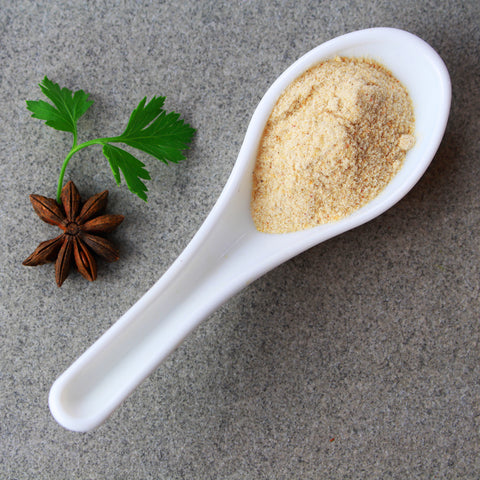
Hing: Food of the Gods
As a western cook, working in restaurants and food production facilities for years didn't prepare me for working with hing, carom, or really any of the other esoteric and tricky-to-use spices in the beautiful Indian flavour palette. Since Master Indian's wonderful team taught me to cook Indian, I've fallen in love with Hing, and I use it in many things.

What exactly is Hing?
Hing is known in the west as asafoetida. It is the root-derived resin of the ferula foetida or giant fennel, and has been used for millenia in Middle-eastern, Pakistani and Indian cooking, particularly in Punjabi cuisine. Its pungent smell has given it some less-than-flattering nicknames, such as devil's dung, but it's so aromatic and unique that it has also been called food of the gods. So pungent is the resin that it is now sold as a powder mixed with semolina and other flours.
What does Hing Taste Like?
Hing is a savoury enhancer with a flavour similar to onions or leeks with perhaps a more floral character, and a rather piercing aroma that becomes intoxicating while preparing a meal with it.
How to Use Hing
Hing is used in the first cooking stage of Indian dishes: the tempering stage. During this stage, you'll be heating oil or butter to anywhere between medium to high heat. I usually use a vegan butter, but canola or another oil that can stand higher heat will do. Once your oil is hot and dimpled, then you can add your hing before you add onions, garlic or fresh ginger, depending on the recipe you're working from (or creating). The hing will sizzle and bubble. (See above video)
Depending on your recipe, other spices such as cumin, cassia bark (or cinnamon stick), cardamom, mustard seed or anise will likely find their way into your hot oil as well. In order to prevent these and the hing from burning, have your onions/garlic/ginger diced, minced and ready to go so that you can add them quickly. Once added, the heat will transfer to these ingredients, and prevent scorching your spices. On medium-high, let your hing and whole spices sizzle for about 15-20 seconds, until they are brown and fragrant.
Bigger whole spice, such as cassia or anise, you may decide to add before the smaller spices.
Using Hing in Western Cuisine
Once you master the realtively simple process of tempering hing, you may use it in whatever dish you desire. As a rule, hing goes well in dishes where onion is a primary flavour, such as French onion soup, or potato leek. It can be a secret weapon for making a killer béchamel, or even an extra special hollondaise.
Hing or asafoetida is not just an Indian spice, and should really be celebrated by chefs and cooks everywhere. As always, please share your creations with us on Masterindian's facebook page or the homespun curries facebook page!
